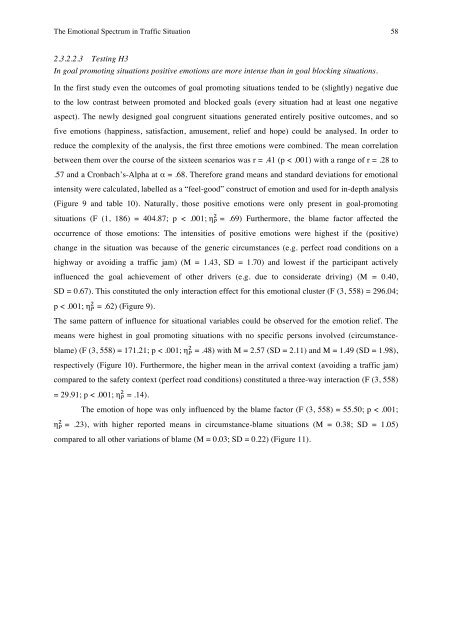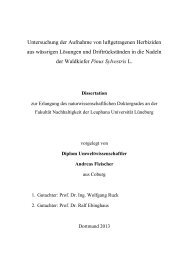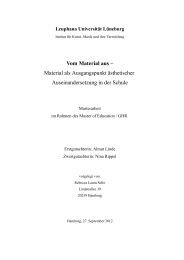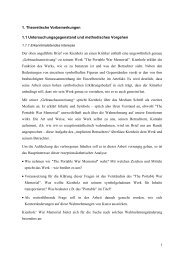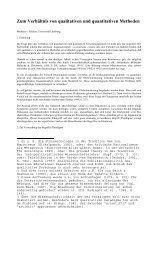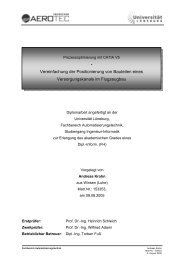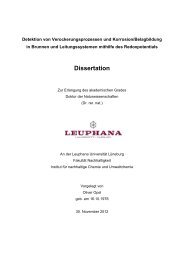Determinants of Emotional Experiences in Traffic Situations ... - OPUS
Determinants of Emotional Experiences in Traffic Situations ... - OPUS
Determinants of Emotional Experiences in Traffic Situations ... - OPUS
Create successful ePaper yourself
Turn your PDF publications into a flip-book with our unique Google optimized e-Paper software.
The <strong>Emotional</strong> Spectrum <strong>in</strong> <strong>Traffic</strong> Situation 58!<br />
2.3.2.2.3 Test<strong>in</strong>g H3<br />
In goal promot<strong>in</strong>g situations positive emotions are more <strong>in</strong>tense than <strong>in</strong> goal block<strong>in</strong>g situations.<br />
In the first study even the outcomes <strong>of</strong> goal promot<strong>in</strong>g situations tended to be (slightly) negative due<br />
to the low contrast between promoted and blocked goals (every situation had at least one negative<br />
aspect). The newly designed goal congruent situations generated entirely positive outcomes, and so<br />
five emotions (happ<strong>in</strong>ess, satisfaction, amusement, relief and hope) could be analysed. In order to<br />
reduce the complexity <strong>of</strong> the analysis, the first three emotions were comb<strong>in</strong>ed. The mean correlation<br />
between them over the course <strong>of</strong> the sixteen scenarios was r = .41 (p < .001) with a range <strong>of</strong> r = .28 to<br />
.57 and a Cronbach’s-Alpha at α = .68. Therefore grand means and standard deviations for emotional<br />
<strong>in</strong>tensity were calculated, labelled as a “feel-good” construct <strong>of</strong> emotion and used for <strong>in</strong>-depth analysis<br />
(Figure 9 and table 10). Naturally, those positive emotions were only present <strong>in</strong> goal-promot<strong>in</strong>g<br />
!<br />
situations (F (1, 186) = 404.87; p < .001; η ! = .69) Furthermore, the blame factor affected the<br />
occurrence <strong>of</strong> those emotions: The <strong>in</strong>tensities <strong>of</strong> positive emotions were highest if the (positive)<br />
change <strong>in</strong> the situation was because <strong>of</strong> the generic circumstances (e.g. perfect road conditions on a<br />
highway or avoid<strong>in</strong>g a traffic jam) (M = 1.43, SD = 1.70) and lowest if the participant actively<br />
<strong>in</strong>fluenced the goal achievement <strong>of</strong> other drivers (e.g. due to considerate driv<strong>in</strong>g) (M = 0.40,<br />
SD = 0.67). This constituted the only <strong>in</strong>teraction effect for this emotional cluster (F (3, 558) = 296.04;<br />
!<br />
p < .001; η ! = .62) (Figure 9).<br />
The same pattern <strong>of</strong> <strong>in</strong>fluence for situational variables could be observed for the emotion relief. The<br />
means were highest <strong>in</strong> goal promot<strong>in</strong>g situations with no specific persons <strong>in</strong>volved (circumstanceblame)<br />
(F (3, 558) = 171.21; p < .001; η ! = .48) with M = 2.57 (SD = 2.11) and M = 1.49 (SD = 1.98),<br />
!<br />
respectively (Figure 10). Furthermore, the higher mean <strong>in</strong> the arrival context (avoid<strong>in</strong>g a traffic jam)<br />
compared to the safety context (perfect road conditions) constituted a three-way <strong>in</strong>teraction (F (3, 558)<br />
= 29.91; p < .001; η ! ! = .14).<br />
The emotion <strong>of</strong> hope was only <strong>in</strong>fluenced by the blame factor (F (3, 558) = 55.50; p < .001;<br />
!<br />
η ! = .23), with higher reported means <strong>in</strong> circumstance-blame situations (M = 0.38; SD = 1.05)<br />
compared to all other variations <strong>of</strong> blame (M = 0.03; SD = 0.22) (Figure 11).


